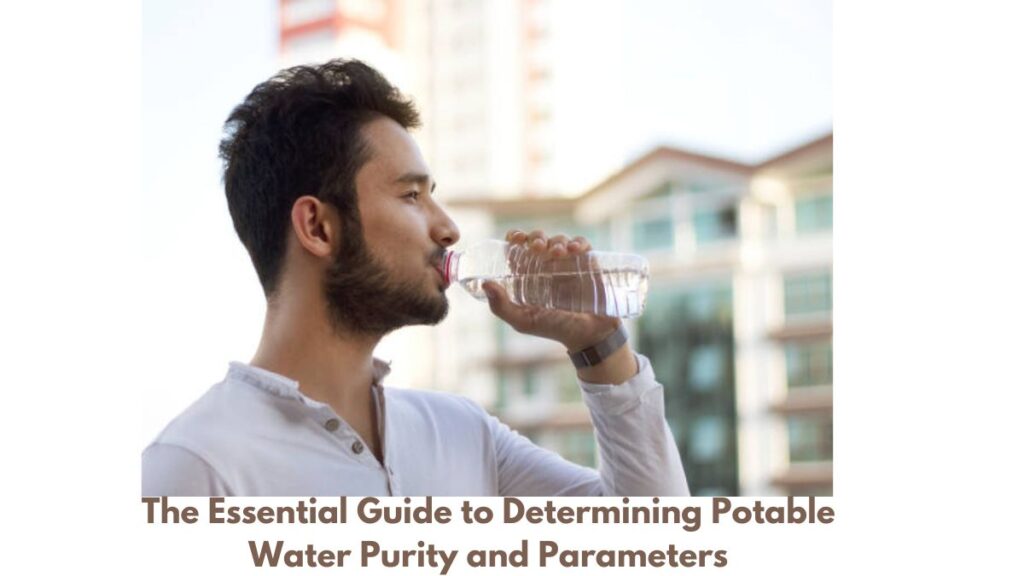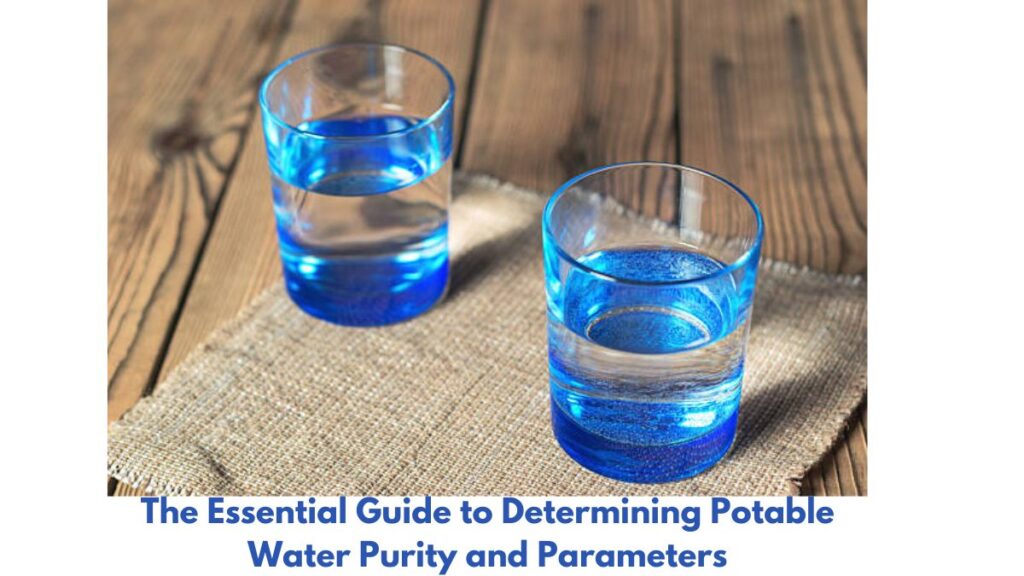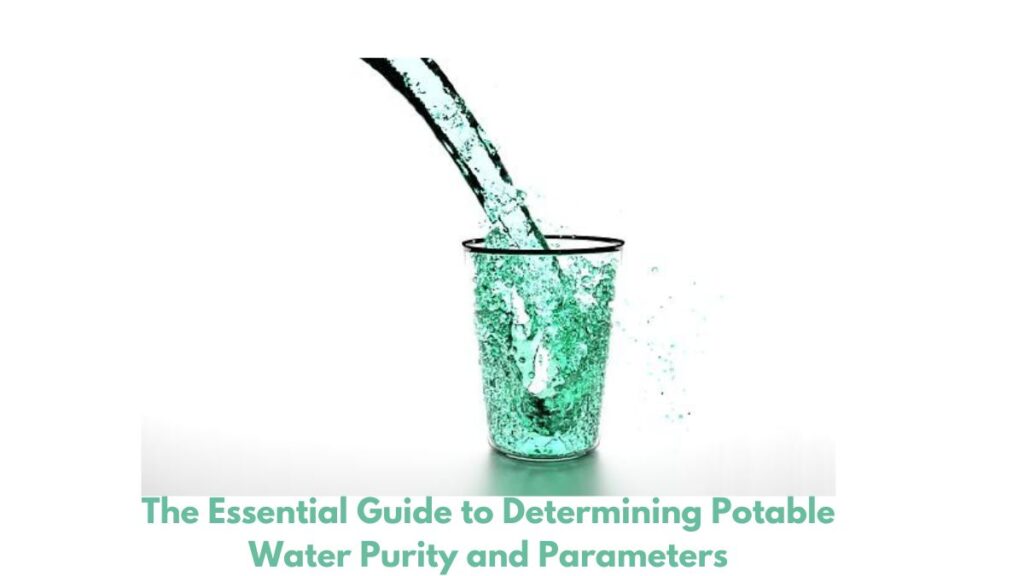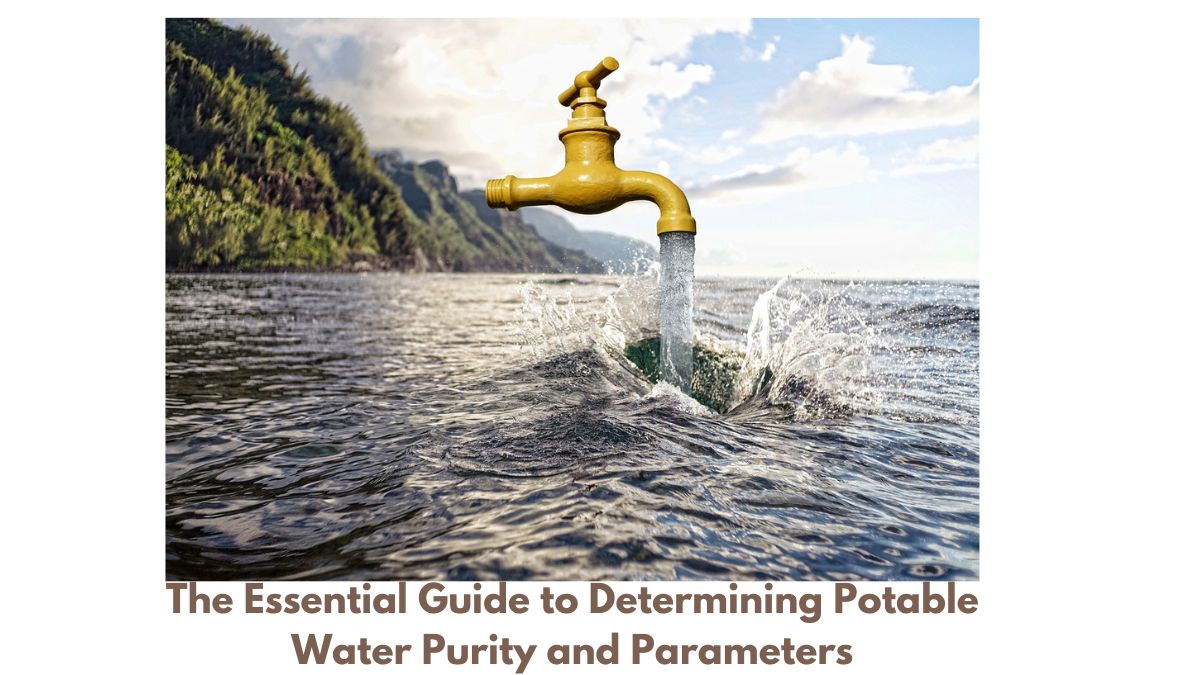Introduction:-
The Essential Guide to Determining Potable Water Purity and Parameters

In the quest for safe and clean drinking water, understanding the purity and parameters of potable water is paramount. From ensuring health and well-being to safeguarding the environment, this comprehensive guide delves into the intricacies of assessing water quality. Let’s embark on a journey to unravel the essentials of determining potable water purity and its critical parameters
Understanding Potable Water Purity
Potable water, by definition, is safe for consumption. However, ensuring its purity involves a multifaceted approach. Factors such as contaminants, microbial organisms, and chemical compositions play significant roles in assessing water quality. The journey towards purity begins with a thorough understanding of these elements.
Exploring Key Parameters: To evaluate potable water quality accurately, several parameters must be considered. These parameters encompass physical, chemical, and biological aspects. Physical parameters include turbidity, color, and odor, providing visual cues to water quality. Chemical parameters, such as pH, dissolved oxygen, and mineral content, offer insights into the composition of water. Biological parameters, including coliform bacteria and pathogens, highlight potential health risks.
Assessment Techniques: Various techniques and methods are employed to assess potable water purity and parameters. From traditional laboratory tests to advanced instrumentation, each approach serves a unique purpose in evaluating water quality. Sampling, analysis, and interpretation form the cornerstone of these assessment techniques, ensuring accurate and reliable results.
Importance of Compliance: In the realm of potable water, regulatory standards and guidelines play a pivotal role. Compliance with established regulations, such as those set by governmental bodies or international organizations, ensures that water meets stringent safety criteria. Adherence to these standards not only safeguards public health but also fosters environmental sustainability.
Practical Tips for Consumers: As consumers, understanding potable water purity empowers us to make informed choices. Simple yet effective practices, such as regular testing, proper storage, and filtration, can enhance water quality at the household level. Additionally, staying updated on local water quality reports and advisories enables proactive measures to address potential concerns.
What are the parameters that can be measured to determine potable water quality?
Several parameters can be measured to determine potable water quality. These parameters fall into three main categories: physical, chemical, and biological. Here’s a breakdown of each category along with some specific parameters:

- Physical Parameters:
- Turbidity: Measures the cloudiness or clarity of water caused by suspended particles.
- Color: Indicates the presence of dissolved organic compounds or minerals in water.
- Odor: Detects unusual smells, which may indicate contamination.
- Temperature: Influences water’s ability to hold dissolved oxygen and affects aquatic ecosystems.
- Taste: Assesses the flavor of water, which can be influenced by dissolved minerals or organic compounds.
- Chemical Parameters:
- pH: Measures the acidity or alkalinity of water, affecting its corrosiveness and suitability for aquatic life.
- Dissolved Oxygen (DO): Indicates the amount of oxygen dissolved in water, crucial for aquatic organisms.
- Total Dissolved Solids (TDS): Measures the total concentration of dissolved substances in water, including minerals, salts, and organic matter.
- Conductivity: Reflects the ability of water to conduct electrical current, influenced by dissolved ions.
- Specific ions: Includes parameters such as chloride, sulfate, nitrate, and fluoride concentrations, which can affect water quality and human health.
- Biological Parameters:
- Coliform Bacteria: Includes indicators such as Escherichia coli (E. coli), which signify fecal contamination and the potential presence of harmful pathogens.
- Total Bacterial Count: Measures the total number of bacteria present in water, indicating overall microbial quality.
- Pathogens: Includes specific microorganisms such as Giardia, Cryptosporidium, and viruses, which pose health risks if present in water.
- Biochemical Oxygen Demand (BOD): Reflects the amount of dissolved oxygen consumed by microorganisms during the decomposition of organic matter, indicating pollution levels.
These parameters are routinely monitored and tested by regulatory agencies, water treatment facilities, and laboratories to ensure compliance with water quality standards and to safeguard public health and the environment.
How can the purity of potable water be checked at home?
Checking the purity of potable water at home is essential for ensuring safe drinking water for you and your family. Here are some methods you can use to check water purity at home:

- Visual Inspection: Start by visually inspecting the water. Look for any cloudiness, discoloration, or floating particles. Clean, pure water should appear clear and colorless.
- Smell Test: Take a sniff of the water. Pure water should have no discernible smell. Any unusual odors, such as a chlorine smell (indicative of chlorination) or a musty odor (suggestive of contamination), should raise concerns.
- Taste Test: While not always definitive, taste can sometimes indicate water quality issues. Pure water should taste neutral and clean. Any unusual tastes, such as metallic, earthy, or chemical flavors, could indicate contamination.
- Home Water Testing Kits: Consider using home water testing kits, which are readily available at hardware stores or online. These kits typically test for various parameters such as pH, chlorine, hardness, lead, bacteria, and other contaminants. Follow the instructions provided with the kit to collect water samples and perform the tests. Results will vary depending on the kit used, so ensure you choose a kit that covers the parameters you are concerned about.
- Boiling Water: Boiling water is an effective method to kill most bacteria, viruses, and parasites that may be present. While boiling won’t remove chemical contaminants or dissolved solids, it can improve microbiological safety. Boil water for at least one minute (or longer at higher altitudes) and let it cool before drinking.
- Activated Carbon Filters: Consider using activated carbon filters, such as those found in pitcher-style or faucet-mounted filtration systems. These filters can remove chlorine, odors, some chemicals, and improve taste. However, they may not be effective against all contaminants, so ensure you select a filter certified to meet your specific water quality needs.
- Water Quality Reports: If you receive water from a public water supply, you can request a copy of the annual water quality report (Consumer Confidence Report) from your water utility. This report provides information on the water source, treatment processes, and detected contaminants. Reviewing this report can help you understand the quality of your drinking water and any potential concerns.
Remember, while these methods can provide valuable information about water quality, they may not detect all contaminants or ensure complete safety. If you have serious concerns about your water quality or if you suspect contamination, consider contacting a certified water testing laboratory or your local health department for professional testing and guidance.
Conclusion:
In the pursuit of potable water purity, knowledge is key. By comprehensively understanding the parameters that define water quality, we can take proactive steps to ensure safe and clean drinking water for ourselves and future generations. Let this essential guide serve as a beacon, illuminating the path towards a healthier and more sustainable water future.






